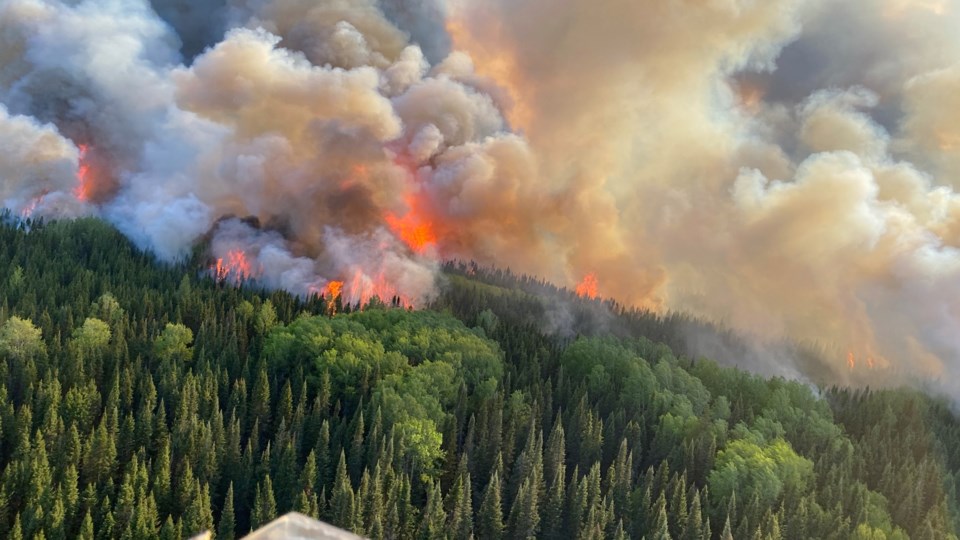Fire officials in northeastern Ontario were urging residents to use extreme caution in any activities that have the potential of sparking a fire as the Ministry of Natural Resources and Forestry's firefighting unit released its latest update.
This includes driving vehicles or using machinery in areas of dry grass or other combustible areas of forest floor, as well as using fireworks.
In the case of fireworks, you could be sent a hefty bill if your wayward firework sparks a blaze.
Although a restricted fire zone, which bans all outdoor burning including campfires, has been in effect across the region for more than a month, fireworks are not restricted during the restricted fire zone, Aviation, Forest Fire and Emergency Services for the Northeast Fire Region states in its July 2 update.
“Fireworks are an exciting part of summer, though during this time of escalated fire activity, we ask you to please exercise extreme caution and consider attending an organized fireworks venue instead of setting off your own,” the AFFES states.
According to the AFFES, the Forest Fire Prevention Act (FFPA) states: “No person who discharges a firearm, a flare, fireworks or explosives in or within 300 metres of a forest area shall leave any residue from the discharge unextinguished.”
A person who starts a wildland fire after failing to extinguish hot residue from fireworks can be charged under the Act “and may be held responsible to pay the total cost of putting the fire out,” the AFFES stated.
The fire service adds: “It is important to check with your local municipality as they may have local burn bans or burn bylaws that prohibit the use of fireworks within municipalities. Fireworks are not restricted during the restricted fire zone.”
As for vehicles and machinery, “we urge residents to use extreme care with any activities that could have the potential of sparking a fire, including parking or driving vehicles on dry grass or other forest floor susceptible to ignition from hot machinery (this can include cars, trucks, SUVs, ATVs, or other mechanical equipment)”.
The fire service reported that as of Sunday there were 19 active wildland fires in the northeast region. Of these, three are not under control, three are being held, seven fires are under control and six are being observed.
There were no new fires confirmed Sunday in the northeast. (The situation is worse in northwestern Ontario, where as of Saturday there were more than 40 active fires.)
The fire hazard varies from low to high throughout the northeast region. For a closer look at fire hazard conditions, view this interactive map.
The following are fires of note, according to the AFFES:
- Cochrane 7 was confirmed on June 2. It is a 37,742 hectare wildland fire is located northeast of Lake Abitibi. Crews, intermediate helicopters, and heavy equipment committed to the fire. It is not under control.
- Cochrane 11 was confirmed on June 17. It’s estimated at 805 hectares and is located approximately 5 km west of the community of Fort Albany and south of Big Island. FireRanger crews are making good progress suppressing this fire. The fire is being held.
- Chapleau 3 was confirmed on June 1. It is a 3,916 hectare wildland fire located 2 kilometres south of October Lake and 2.5 kilometres west of Vichaw Lake. It is not under control.
- Chapleau 6 was confirmed on June 4. It is a 1,228 hectare wildland fire located 2.5 kilometres west of Morin Lake and 1 kilometre east of Bolkow Lake. It is not under control.
- Sudbury 10 was confirmed on June 2. It measures 1,370 hectares and is located 3 kilometres west of Fox Lake and 5 kilometres east of Acheson Lake. It is under control.
- Sudbury 17 was confirmed June 4. It is a 5,857 hectare wildland fire located 3 kilometres west of Madawanson Lake and 0.5 kilometres east of Pilot Lake. Multiple crews are committed to the fire. It is under control.
The fire service urged anyone out on the lakes to be on the lookout of waterbombers. “When waterbombers approach a body of water, move close to the shore so they can perform their scoop safely. A waterbomber will not scoop from a lake or river if encroaching watercraft pose a safety hazard.”
Meanwhile, while people seem fascinated by photos of forest fires and what is left in their wake, flying drones around forest fires is "both dangerous and illegal”, the AFFES said. “When you fly a drone near a forest fire, you can put the lives of pilots, firefighters and other emergency personnel at risk.”
